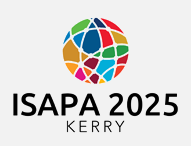Start Date
17-6-2025 12:30 PM
End Date
17-6-2025 2:00 PM
Abstract
Introduction The United Nations considers sports in its 2030 Agenda as an effective tool for the social inclusion of people with disabilities (United Nations, 2015). Despite its importance in the social and sporting context, the concept of inclusion often remains vague and frequently focuses one-sidedly on a “placement approach” (Haegele & Wilson, 2022, p. 25). A space labelled as inclusive does not determine whether it is really experienced as inclusive. Because inclusion is individual (Hiemstra & Rama, 2024). In a study by Oldörp et al. (2024), blind tennis players describe their sport as inclusive, depending on their own understanding of inclusion. Skiers in a study by May-West et al. (2018) saw their sporting activity as a tool to show sighted people that VI people enjoy the same leisure activities . In doing so, they attempt to challenge normative ideas about sport and people with VI and promote inclusion.
Methodology Six adult skiers with visual impairment (VI) from Germany took part in the study. All adults were amateur or recreational athletes. To reveal their subjective experiences, episodic interviews (Flick, 2011) were conducted in November 2024. The results will beinterviews were analyzed using content-related structuring of qualitative text analysis.
Results The results are presented after the analysis according to one of the research questions: Do alpine skiers experience their sport as inclusive? The interviewees generally view the inclusive potential of skiing positively, highlighting the possibility of skiing with VI as a key benefit. However, they note challenges such as separate structures, a lack of guides, and the visibility of disability due to guide presence.
Conclusions This research project aims to use skiing explicitly from the perspective of people with disabilities (Haegele et al., 2020) to identify experiences from the perspective of VI skiers to recognize the inclusive potential of alpine ski sports. The statements of the interviewees can help in promoting inclusion and reducing barriers to sport participation by challenging ableist assumptions.
Recommended Citation
Oldörp, Felix and Giese, Martin, "Inclusive experiences through alpine skiing? Perspectives towards inclusion by people with visual impairments" (2025). International Symposium of Adapted Physical Activity and International Symposium on Physical Activity and Visual Impairment and Deafblindness. 41.
https://sword.mtu.ie/isapa/2025/day2/41
Inclusive experiences through alpine skiing? Perspectives towards inclusion by people with visual impairments
Introduction The United Nations considers sports in its 2030 Agenda as an effective tool for the social inclusion of people with disabilities (United Nations, 2015). Despite its importance in the social and sporting context, the concept of inclusion often remains vague and frequently focuses one-sidedly on a “placement approach” (Haegele & Wilson, 2022, p. 25). A space labelled as inclusive does not determine whether it is really experienced as inclusive. Because inclusion is individual (Hiemstra & Rama, 2024). In a study by Oldörp et al. (2024), blind tennis players describe their sport as inclusive, depending on their own understanding of inclusion. Skiers in a study by May-West et al. (2018) saw their sporting activity as a tool to show sighted people that VI people enjoy the same leisure activities . In doing so, they attempt to challenge normative ideas about sport and people with VI and promote inclusion.
Methodology Six adult skiers with visual impairment (VI) from Germany took part in the study. All adults were amateur or recreational athletes. To reveal their subjective experiences, episodic interviews (Flick, 2011) were conducted in November 2024. The results will beinterviews were analyzed using content-related structuring of qualitative text analysis.
Results The results are presented after the analysis according to one of the research questions: Do alpine skiers experience their sport as inclusive? The interviewees generally view the inclusive potential of skiing positively, highlighting the possibility of skiing with VI as a key benefit. However, they note challenges such as separate structures, a lack of guides, and the visibility of disability due to guide presence.
Conclusions This research project aims to use skiing explicitly from the perspective of people with disabilities (Haegele et al., 2020) to identify experiences from the perspective of VI skiers to recognize the inclusive potential of alpine ski sports. The statements of the interviewees can help in promoting inclusion and reducing barriers to sport participation by challenging ableist assumptions.

